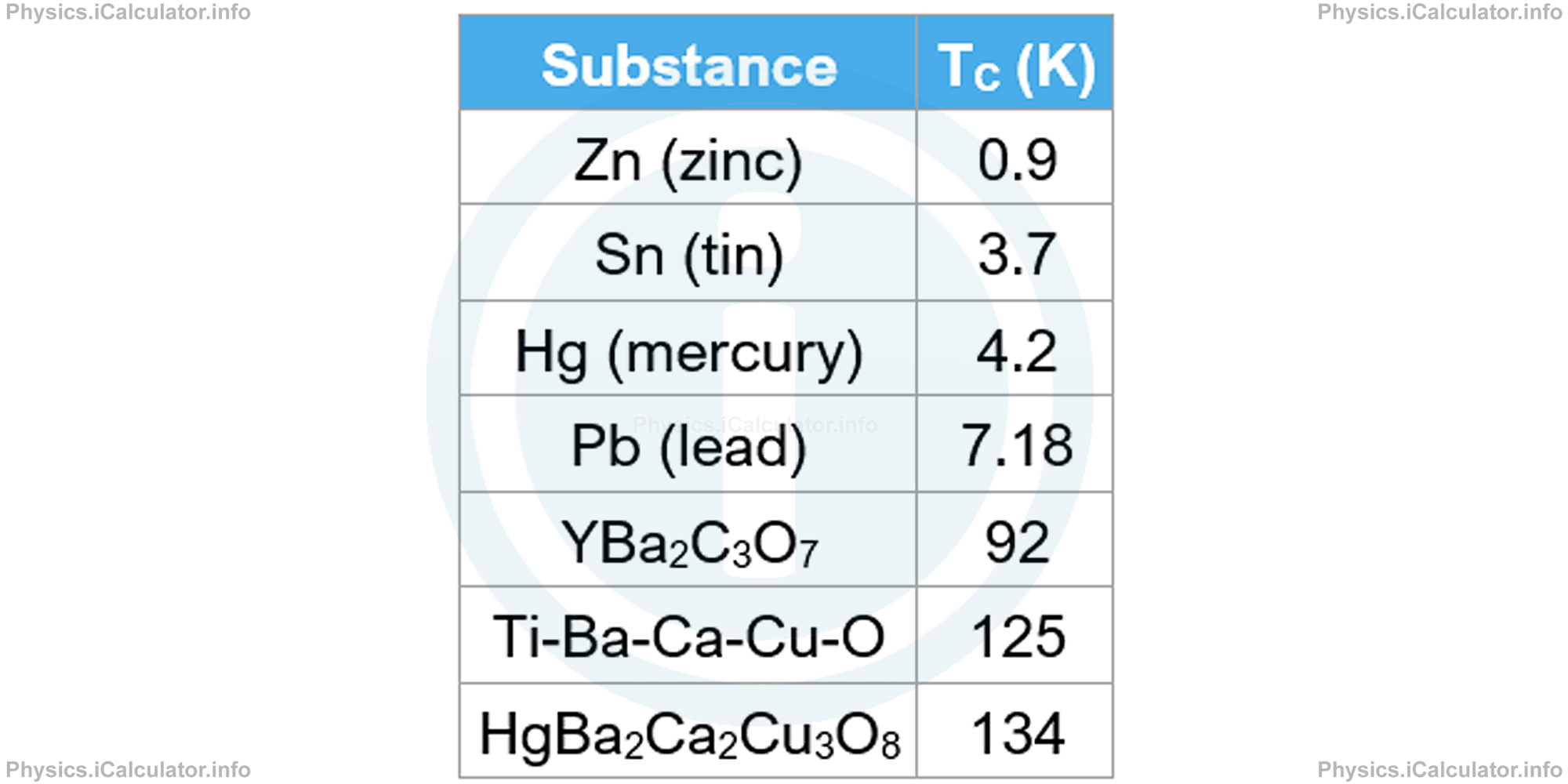Menu
Physics Lesson 15.8.2 - Superconductivity
Please provide a rating, it takes seconds and helps us to keep this resource free for all to use
Welcome to our Physics lesson on Superconductivity, this is the second lesson of our suite of physics lessons covering the topic of Miscellaneous, you can find links to the other lessons within this tutorial and access additional physics learning resources below this lesson.
Superconductivity
A superconductor is a material whose resistance is very low, close to zero. As discussed in tutorial 15.2, resistance of material largely depends on its temperature, i.e. higher the temperature of material, higher its resistance. Given this, a material obviously must behave as a superconductor at very low temperatures (close to the absolute zero).
A Dutch scientist called H. K. Ones was the first who discovered the phenomenon of superconductivity in 1911. When cooling down mercury at very low temperature, he realized that the resistance of mercury became almost zero. During the observations, he noticed that at 4.2 K (-268.960 C) the resistance of mercury suddenly became zero.
Other substances are able to show superconductive properties as well. This occurs when temperature decreases below a threshold value, known as the transition temperature, TC. The table below shows some superconductors along with the corresponding transition temperatures.

Superconductivity occurs due to the position of atoms in molecules in certain combinations, which cause enormous free spaces between neighbouring atoms. As a result, electrons move unopposed throughout the material.
The other advantage of a superconductor besides the high efficiency of energy transmission is the long lasting current flow when the source stops supplying the circuit.
In the future, there is a lot of possibility to improve the technology of superconductor production. If scientists are able to produce a strong superconductor with a higher transition temperature than the actual materials, this will bring a revolution in technology, as motors and generators dimensions would be four to five times smaller than the actual ones. In addition, computers would be much faster, electricity transmission would be cheaper and more efficient, electromagnets would be stronger and so on.
You have reached the end of Physics lesson 15.8.2 Superconductivity. There are 5 lessons in this physics tutorial covering Miscellaneous, you can access all the lessons from this tutorial below.
More Miscellaneous Lessons and Learning Resources
Whats next?
Enjoy the "Superconductivity" physics lesson? People who liked the "Miscellaneous lesson found the following resources useful:
- Superconductivity Feedback. Helps other - Leave a rating for this superconductivity (see below)
- Electrodynamics Physics tutorial: Miscellaneous. Read the Miscellaneous physics tutorial and build your physics knowledge of Electrodynamics
- Electrodynamics Revision Notes: Miscellaneous. Print the notes so you can revise the key points covered in the physics tutorial for Miscellaneous
- Electrodynamics Practice Questions: Miscellaneous. Test and improve your knowledge of Miscellaneous with example questins and answers
- Check your calculations for Electrodynamics questions with our excellent Electrodynamics calculators which contain full equations and calculations clearly displayed line by line. See the Electrodynamics Calculators by iCalculator™ below.
- Continuing learning electrodynamics - read our next physics tutorial: Electric Current. Current Density
Help others Learning Physics just like you
Please provide a rating, it takes seconds and helps us to keep this resource free for all to use
We hope you found this Physics lesson "Miscellaneous" useful. If you did it would be great if you could spare the time to rate this physics lesson (simply click on the number of stars that match your assessment of this physics learning aide) and/or share on social media, this helps us identify popular tutorials and calculators and expand our free learning resources to support our users around the world have free access to expand their knowledge of physics and other disciplines.
Electrodynamics Calculators by iCalculator™
- Amount Of Substance Obtained Through Electrolysis Calculator
- Charge Density Calculator
- Electric Charge Stored In A Rc Circuit Calculator
- Electric Field In Terms Of Gauss Law Calculator
- Electric Power And Efficiency Calculator
- Electron Drift Velocity Calculator
- Equivalent Resistance Calculator
- Force Produced By An Electric Source Calculator
- Joules Law Calculator
- Ohms Law Calculator
- Potential Difference In Rc Circuit Calculator
- Resistance Due To Temperature Calculator
- Resistance Of A Conducting Wire Calculator